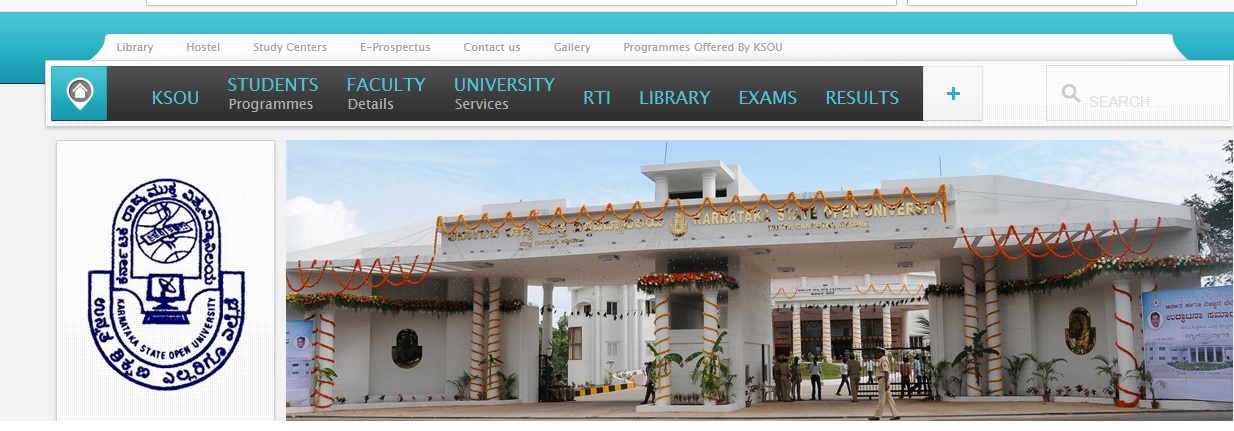MAECO15 Money Banking & Financial Markets M.A Question Paper Model : ksoukarnataka.com
College : Karnataka State Open University
Degree : M.A
Department :Economics
Year : I
Subject :MAECO15 Money Banking & Financial Markets
Document type : Model Question Paper
Website : ksoukarnataka.com
Download Model/ Sample Question Papers
https://www.pdfquestion.in/uploads/ksoukarnataka.com/6515-MAECO15%20-%20MONEY%20BANKING%20AND%20FINANCIAL%20MARKETS.docx
Money Banking & Financial Markets Model Question Paper
(I YEAR) (M.A_Economics)
MAECO15
TIME : 03 HOURS
MAX.MARKS : 90
Related : Karnataka State Open University MAEDU15 Sociology Foudation Of Education M.A Question Paper Model :www.pdfquestion.in/6514.html
GROUP A : Answer any three questions.
Q.1Discuss the role and functions of money in Modern Economics.
Q.2What are the types of banking? Bring out their relative significance in the working of an economy. (15)
Q.3Give an outline on the relevance of commercial banking. (15)
Q.4Examine the changing role of central banking. (15)
Q.5Compare and contrast the central banking systems of America and India. (15)

GROUP B : Answer any three questions.
Q.6Distinguish money market and capital market. Write the role of a money market. (10)
Q.7Outline the assets and liability statement of a commercial bank. (10)
Q.8Discuss the selective methods of credit control. (10)
Q.9Outline the impact of Non-banking Financial Intermediaries on monetary policy. (10)
Q.10 Assess the present Scenario of development banking in India. (10)
GROUP C : Answer any three questions.
Q.11 Write a short note on Financial System. (05)
Q.12 Write a short note on Lender of Last resort. (05)
Q.13 Write a short note on Money Stock measures. (05)
Q.14 Write a short note on Financial inclusion. (05)
Q.15 Write a short note on Mutual Funds. (05)
MEC15: Money, Banking and Financial Markets
BLOCK 1:
UNIT 1: Money concepts – Near Money, Inside Money, Outside Money,
Kinds of Money – Functions of Money.
1.0 Objectives
1.1 Introduction
1.2 Money -Meaning and Definition
1.3 Money-Different concepts
1.3.1 Near Money
1.3.2 Inside Money
1.3.3 Outside Money
1.4 Various kinds of Money
1.4.1 Metallic Money or Full-Bodied Money
1.4.2 Full -Bodied Money or Representative Convertible paper currency,
1.4.3 Credit Money Inconvertible Paper currency / Token Money
1.4.4 Special Drawing Rights (paper Gold)
1.5 Functions of Money
1.5.1 Money as a Medium of Exchange
1.5.2 Money as a Store of Value
1.5.3 Money as a unit of Account
1.5.4 Money as a standard of deferred payment
1.6 Summary
1.7 Keywords
1.8 Questions for Self Study
1.9 Books for Self Study
UNIT 2: Role Of Money And It’ Significance:
2.0 Objectives
2.1 Introduction
2.2 Role of money in different economic systems.
2.2.1 Role of money in capitalistic economies
2.2.2 Role of money in socialistic economies
2.2.3 Role of money in mixed (or planned) economies.
2.3 Significance of money
2.4 Limitations of money
2.5 Dynamic role of money in a modem economy.
2.6 Summary
2.7 Keywords
2.8 Questions for Self Study
2.9 Books for Study
BLOCK 2:
UNIT 3: Banking: Concept, Organization and Structure.
3.0 Objectives
3.1 Introduction
3.2 Concept of Banking
3.3 Banking Organization and Structure -Meaning and Significance
3.3.1 Unit Banking
3.3.2 Branch Banking
3.3.3 Group Banking-Meaning and usefulness
3.3.4 Chain Banking-Meaning, Working
3.3.5 Mixed Banking -Meaning and significance
3.3.6 Correspondent Banking
3.3.7 Role of Commercial Banking in a Developing Economy
3.4 Summary
3.5 Keywords
3.6 Questions for Self Study
3.7 Books for Self Study
UNIT 4: Theories Of Commercial Banking:
4.0 Objectives
4.1 Introduction
4.2 Theory of Portfolio Management
4.2.1 The Real Bills Doctrine
4.3 Shift ability Theory
4.4 Anticipated Income Theory
4.5 Liabilities Management Theory
4.6 Summary
4.7 Keywords
4.8 Questions for Self Study
4.9 Books for Self Study
UNIT 5: Balance Sheet of a Commercial Bank:
5.0 Objectives
5.1 Introduction
5.2 Balance sheet of a Commercial Bank
5.2.1 Meaning
5.2.2 Significance
5.2.3 Description – Liabilities and Assets
5.2.4 Advantages of preparing a Balance sheet
5.3 Investment policy of a commercial Bank
5.3.1 Need
5.3.2 Significance
5.3.3 Principles of a Bank Investment policy
5.4 NBFI’s and Monetary Policy.
5.5 Summary
5.6 Keywords
5.7 Questions for self study
5.8 Books for Self Study
UNIT 6: Functions Of Commercial Banks:
6.0 Objectives
6.2 Introduction
6.3 Defining bank
6.4 Evaluation of banks
6.5 Functions of commercial banks
6.4.1 Deposits -mobilization and diversification
6.4.2 Credit creation
6.4.3 Lending activities
6.4.4 General utility functions
6.4.5 General agency services
6.5 Summary
6.6 Keywords
6.7 Questions for Self Study
6.8 Books for Self Study
UNIT 7: Credit Creation And Its Limitation:
7.0 Objectives
7.1 Introduction
7.2 Multiple expansion of bank credit
7.2.1 Credit creation in a single monopoly bank
7.2.2 Multiple expansion of bank credit
7.3 Limitations of credit creation by commercial banks.
7.4 Bank deposit contraction process
7.5 Summary
7.6 Keywords
7.7 Questions for Self Study
7.8 Books for Self Study
UNIT 8: Non-Bank Financial Intermediaries (NBFI’S):
8.0 Objectives
8.1 Introduction
8.2 Meaning of Non Banking Financial Intermediaries (NBFI’S)
8.3 Types of NBFI’S
8.3.1 Pension Funds
8.3.2 Mutual Savings Banks/Funds
8.3.3 Private Financial Corporations
8.3.4 Open End and Close End Mutual Funds
8.3.5 Savings and Loans Associations
8.3.6 Life Insurance Companies
8.3.7 Credit Unions
8.4 Role of NBFI’S in Economic Growth.
8.5 NBFI’s and Monetary Policy
8.6 Summary
8.7 Keywords
8.8 Questions for Self Study
8.9 Books for Self Study